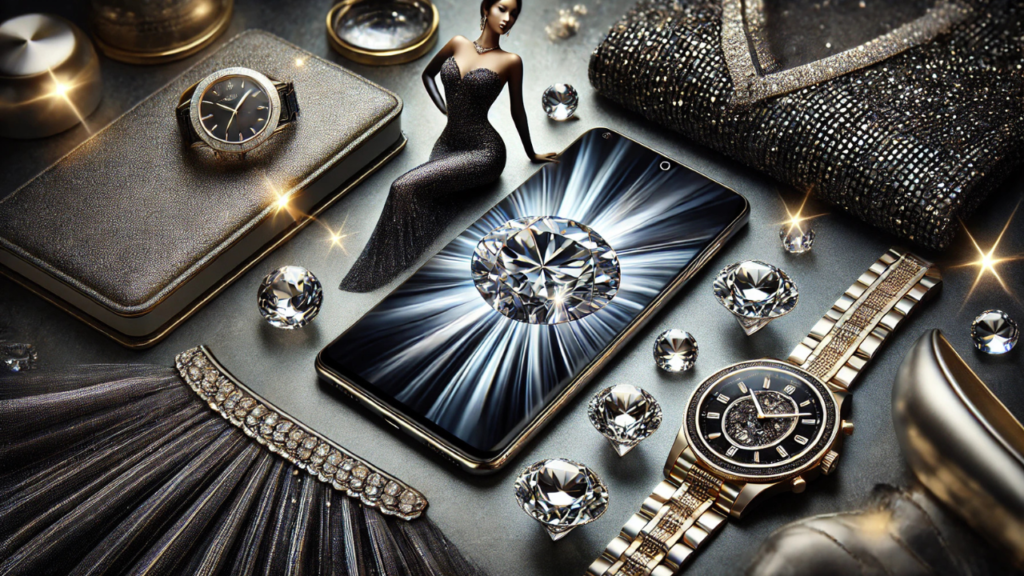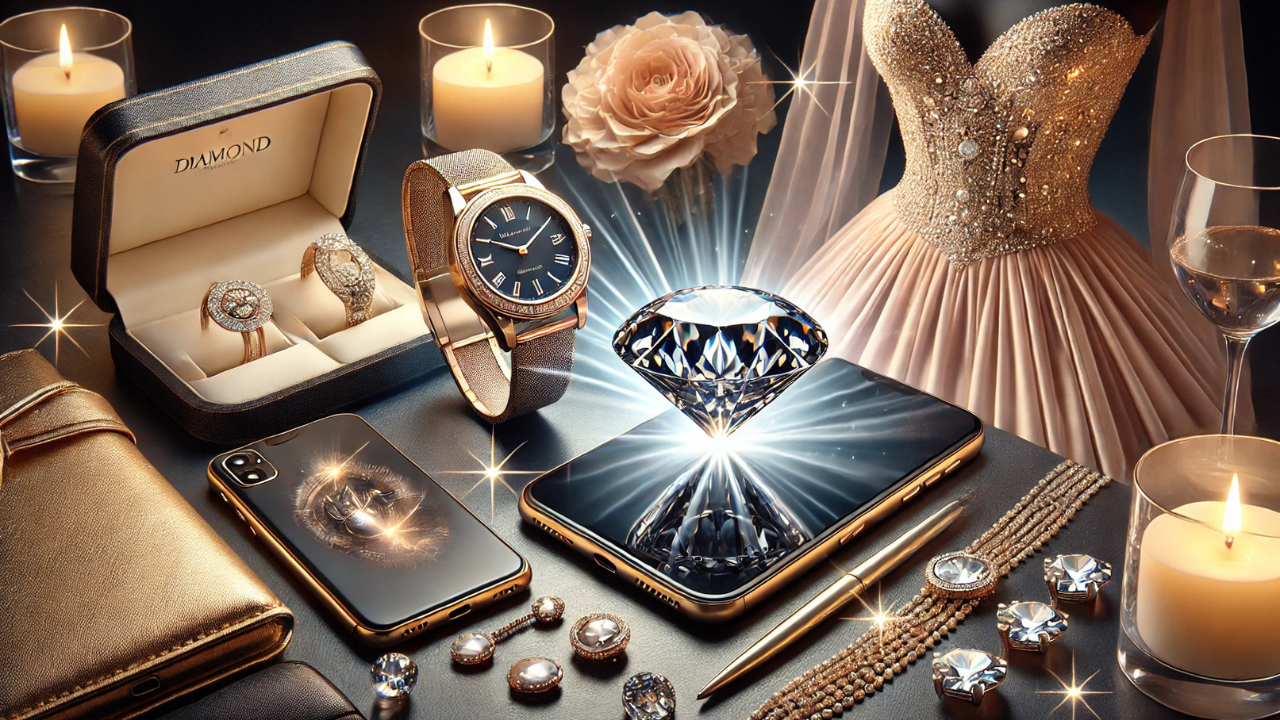Introduction
The term “diamond touch” has become synonymous with luxury, refinement, and exclusivity. It refers to the art of adding a touch of brilliance, elegance, and sophistication to a product, elevating it to a whole new level of perfection. While diamonds themselves have been coveted for centuries, the idea of a “diamond touch” has expanded beyond the realm of fine jewelry into various industries. From cutting-edge technology to high-end fashion, the diamond touch has become a symbol of top-tier craftsmanship and unparalleled quality.
In a world where consumers are always searching for the finest and most unique products, the diamond touch is a way to stand out. Whether it’s a glistening gemstone meticulously set into a ring or a tech gadget with a diamond-like finish, the impact of this intricate technique is undeniable. This article explores the concept of a diamond touch, its process, applications, and how it influences both the value and perception of products.
1. What is Diamond Touch?
At its core, the “diamond touch” refers to a method of enhancing the appearance and quality of a product through specialized craftsmanship that mirrors the allure of diamonds. Diamonds are precious, rare, and admired for their brilliant sparkle, and the diamond touch seeks to replicate this radiance in various forms. The application of a diamond touch is often characterized by an exceptional attention to detail, an emphasis on refinement, and a commitment to perfection.
While diamonds are typically associated with jewelry, the diamond touch is not limited to precious stones. In the jewelry world, this often means the art of polishing and cutting a diamond to maximize its brilliance. However, in other fields such as technology and fashion, the concept has evolved. For instance, technology products, like smartphones and smartwatches, may feature diamond-like coatings that enhance their appearance and durability. In the world of fashion and design, the diamond touch may refer to custom-tailored finishes that evoke luxury, such as sparkling accents or intricate embellishments on clothing, shoes, or accessories.
The diamond touch has thus become a metaphor for exceptional quality, merging the world of high-end design with cutting-edge innovation.
2. The Process Behind the Diamond Touch
Achieving a diamond touch requires precision, skill, and specialized techniques. For jewelry, the process begins with selecting the right diamond, one with ideal characteristics, such as the cut, clarity, color, and carat weight. The diamond is then meticulously cut and polished to enhance its brilliance. This is where the “diamond touch” truly comes into play: expert gemologists and craftsmen use a series of techniques to perfect the stone’s surface, creating a radiant sparkle that captures light from every angle.
In other industries, the diamond touch is also achieved using advanced materials and technology. For example, diamond-like coatings have become popular in the world of electronics. These coatings are applied to surfaces to make them more resistant to scratches, while also offering an elegant, high-end aesthetic. The result is a product that not only looks better but also performs better, with added durability and protection. Such coatings can be found on luxury watches, mobile phones, and other high-end gadgets, offering an extra layer of sophistication that appeals to consumers.
In fashion, the diamond touch involves a different approach. Designers often work with gemstones, crystals, or even metallic finishes to add an extra layer of luxury to their creations. This can include embellishing garments with intricate beadwork, adding sparkling details to accessories, or incorporating reflective elements into footwear. The goal is to create something that stands out and speaks to the wearer’s desire for exclusivity and elegance.
3. The Impact of Diamond Touch on Quality and Value

The diamond touch is more than just about aesthetics; it’s also about the lasting impact it has on the overall quality and value of a product. When a product is adorned or crafted with this level of precision, it not only looks exceptional but also feels exceptional. For example, in jewelry, a diamond touch often translates to a higher quality piece, as diamonds are rare and valuable. Their inclusion or their imitation on a product elevates the item’s perceived worth.
In the technology sector, the application of diamond-like coatings makes products not only more visually appealing but also more durable. Phones, for example, are often subject to wear and tear, and a diamond-like finish provides an extra layer of protection against scratches and scuffs. This increase in durability enhances the product’s longevity, thus adding more value to the consumer’s investment.
Moreover, a diamond touch on fashion or design items communicates exclusivity. When a designer creates a product with diamond-like embellishments or finishes, they’re not just enhancing its appearance—they are elevating its status. Such items are considered luxurious and rare, which naturally increases their value in the eyes of discerning consumers. As consumers continue to gravitate toward unique, high-end products, the demand for the diamond touch grows, pushing the market for luxury items to new heights.
4. Applications of Diamond Touch in Modern Industries
The diamond touch isn’t confined to the world of jewelry; it has found its place in several industries, each adapting the concept to its unique needs.
Jewelry and Watches
In the jewelry industry, diamonds have long been a symbol of beauty and wealth. However, the “diamond touch” has taken this to the next level. Whether it’s a diamond-studded necklace or a timepiece with a diamond-encrusted bezel, the addition of diamonds makes these products not only more beautiful but also more valuable. The precision with which diamonds are set, cut, and polished in these pieces reflects the care and craftsmanship involved, contributing to their allure.
Technology and Electronics
In the tech world, diamond-like coatings have gained popularity due to their ability to increase the durability of electronic devices. These coatings, often made from materials like carbon, are applied to smartphones, watches, and other gadgets to provide them with a sleek, shiny finish that resembles the brilliance of diamonds. They not only enhance the aesthetic appeal of these products but also protect them from scratches and wear, making them last longer and perform better.
Fashion and Design
In fashion, the diamond touch is synonymous with luxury. Designers have begun incorporating diamond-like elements into their collections to make garments, shoes, and accessories more opulent. This can range from the use of rhinestones and crystals in evening gowns to metallic accents in shoes and handbags. These additions enhance the visual appeal and make the product feel like a statement piece, further adding to its perceived value.
Home Décor and Art
The diamond touch has even extended to home décor and art. Sculptures, furniture, and decorative pieces that feature diamonds or diamond-like finishes convey an aura of elegance and refinement. Whether it’s a chandelier adorned with Swarovski crystals or a table with diamond-etched designs, these items stand as symbols of sophistication and exclusivity.
Conclusion
The diamond touch is a powerful symbol of luxury, craftsmanship, and refinement. From its origins in fine jewelry to its current applications across various industries, this concept has transcended the world of precious stones and become a mark of quality and elegance. Whether in jewelry, technology, fashion, or design, the diamond touch has proven its value by enhancing not only the aesthetic appeal of products but also their durability and performance. As the demand for unique, high-end products continues to grow, the diamond touch remains a key differentiator in the marketplace, ensuring that the items we cherish are not only beautiful but enduring.
FAQs
What does “diamond touch” mean? The diamond touch refers to the process of adding luxury, refinement, and exceptional craftsmanship to a product, often inspired by the brilliance and rarity of diamonds.
How is the diamond touch applied in jewelry making? In jewelry, the diamond touch involves expert gemologists cutting, polishing, and setting diamonds to maximize their brilliance and value.
What industries use diamond touch techniques? The diamond touch is applied in various industries, including jewelry, fashion, technology, and home décor, to enhance products’ appearance and durability.
Does the diamond touch improve the value of products? Yes, products with a diamond touch often see an increase in perceived value due to their luxury appeal, rarity, and durability.
Are diamond-like coatings used in consumer electronics? Yes, diamond-like coatings are often applied to electronic devices such as smartphones, watches, and laptops to enhance their appearance and protect against wear and tear.
Can fashion brands incorporate diamond touch into their designs? Yes, many fashion brands incorporate diamond-like embellishments, such as crystals or rhinestones, to elevate the luxury and exclusivity of their products.
Is the diamond touch associated only with physical products? While traditionally linked to physical items, the concept of a diamond touch can also refer to an intangible level of refinement and quality in service and craftsmanship.
What are some examples of diamond touch in modern technology? Diamond-like coatings are commonly found in luxury smartphones, high-end watches, and wearables, providing both visual appeal and enhanced durability.
You May Also Read: https://ventsbuzz.pro/spectrum-outage/
